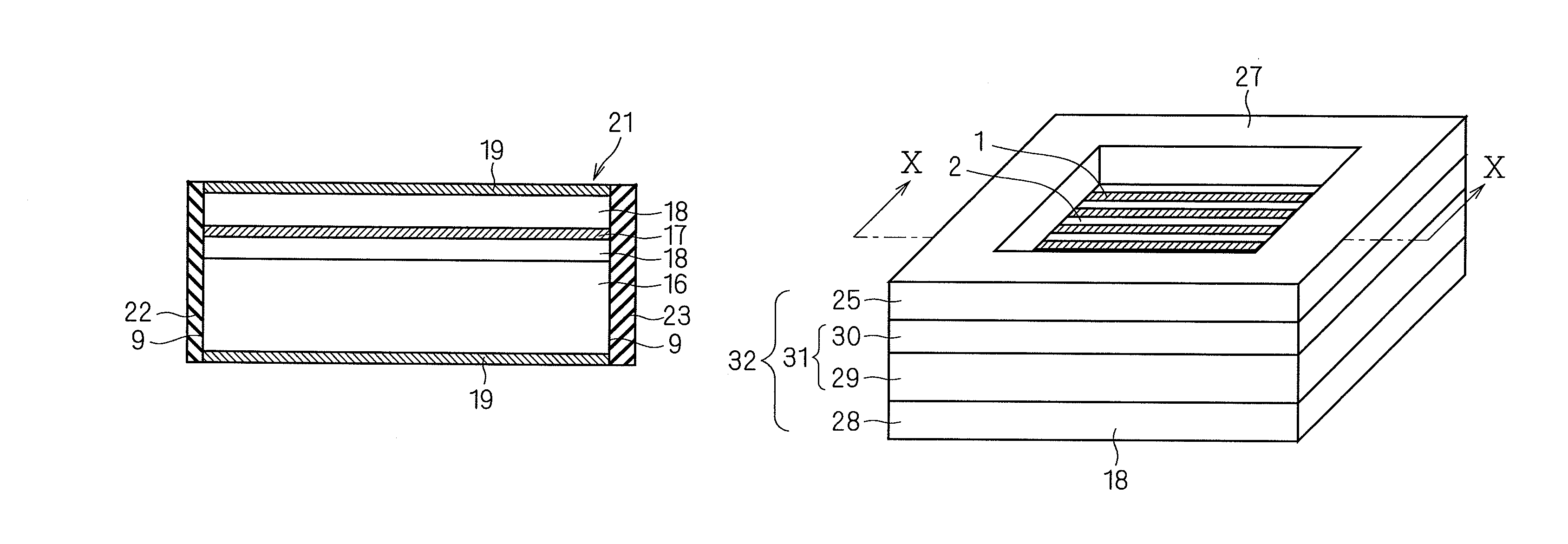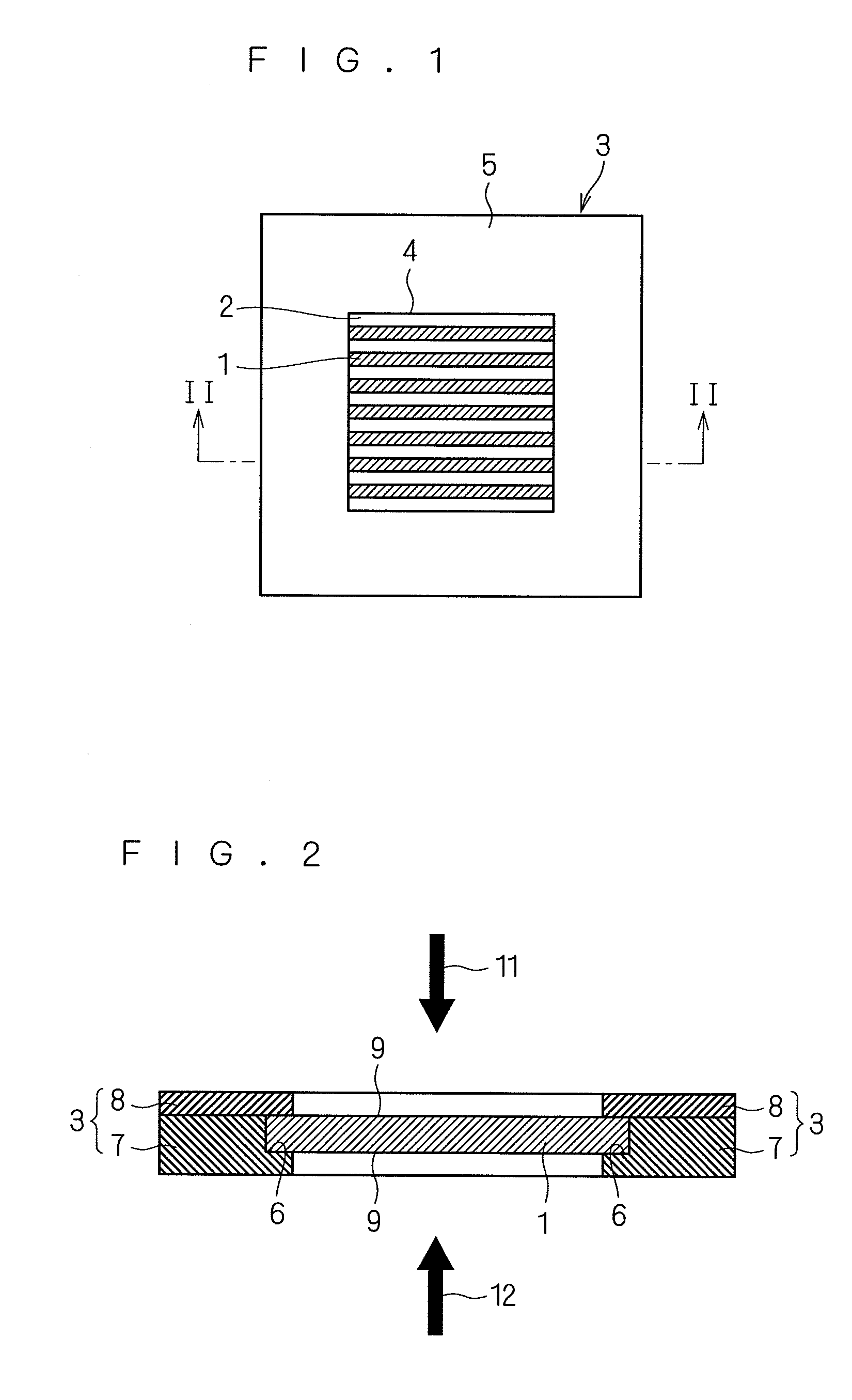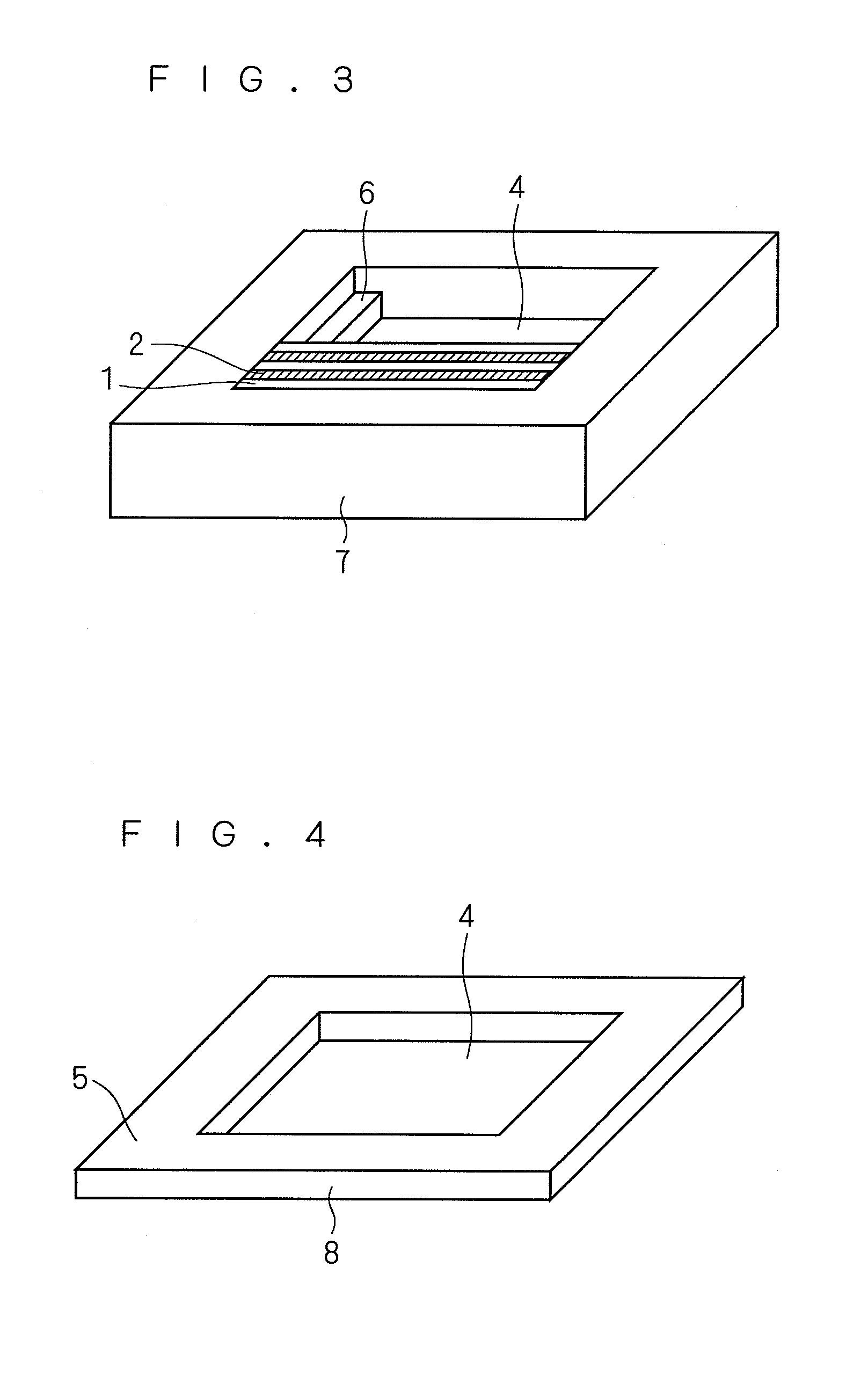Method of manufacturing semiconductor laser using end-face-processing jig
a technology of end-face processing and semiconductor laser, which is applied in the direction of semiconductor lasers, liquid surface applicators, coatings, etc., can solve the problems of deteriorating the reliability of semiconductor lasers, and achieve the effect of preventing optical damage and deterioration of semiconductor lasers
- Summary
- Abstract
- Description
- Claims
- Application Information
AI Technical Summary
Benefits of technology
Problems solved by technology
Method used
Image
Examples
first preferred embodiment
[0025]FIG. 1 is a plan view of a semiconductor laser's end-face-processing jig 3 according to a first preferred embodiment of the invention. FIG. 2 is a cross-sectional view taken along line II-II in FIG. 1. FIG. 3 is a simplified perspective view of a holding jig 7. FIG. 4 is a simplified perspective view of a fixing jig 8. Referring to FIG. 1, semiconductor laser bars 1 obtained by cleaving a wafer 15 into bars, which will be described later with reference to FIG. 5, and spacers 2 are arranged alternately and fixed to a semiconductor laser's end-face-processing jig (hereinafter referred to simply as an “end-face-processing jig) 3. In other words, a plurality of semiconductor laser bars 1 that are arranged with each spacer 2 interposed between each adjacent two of them and that are fixed to the end-face-processing jig 3 are illustrated in FIG. 1.
[0026]Each semiconductor laser bar 1 is, as will be described later with reference to FIG. 6, formed of a plurality of semiconductor laser...
second preferred embodiment
[0043]Next described is an end-face-processing jig and a method of manufacturing a semiconductor laser using the end-face-processing jig according to a second preferred embodiment of the invention. The steps in the production of a semiconductor laser bar according to the present preferred embodiment are identical to those previously described in the first preferred embodiment, so that corresponding parts are designated by the same reference numerals and redundant descriptions of the common parts to those in the first preferred embodiment are omitted herein.
[0044]Although the first preferred embodiment has described the end-face-processing jig 3 made of either an oxide or a nitride, oxide and nitride are difficult to process as compared to metal and cause an increase in manufacturing cost. Thus, the holding jig 7 having in particular the spot facing part 6 should desirably be made of a metal such as stainless used steel (SUS).
[0045]An end-face-processing jig 32 according to the prese...
third preferred embodiment
[0051]Next described is an end-face-processing jig and a method of manufacturing a semiconductor laser using the end-face-processing jig according to a third preferred embodiment of the invention. Both the steps in the production of a semiconductor laser bar and the end-face-processing jig according to the present preferred embodiment are identical to those previously described in the first preferred embodiment, so that corresponding parts are designated by the same reference numerals and redundant descriptions of the common parts to those in the first preferred embodiment are omitted herein.
[0052]In forming a reflectance control film, the material for the reflectance control films 22 and 23 is deposited not only on the end-face-processing jig 3 but also on the spacers 2. Thus, if the spacers 2 are made of a metal, the spacers 2 would be etched by the deposition of the material for the reflectance control films 22 and 23, which in some cases can cause metal particles released by the...
PUM
 Login to View More
Login to View More Abstract
Description
Claims
Application Information
 Login to View More
Login to View More - R&D
- Intellectual Property
- Life Sciences
- Materials
- Tech Scout
- Unparalleled Data Quality
- Higher Quality Content
- 60% Fewer Hallucinations
Browse by: Latest US Patents, China's latest patents, Technical Efficacy Thesaurus, Application Domain, Technology Topic, Popular Technical Reports.
© 2025 PatSnap. All rights reserved.Legal|Privacy policy|Modern Slavery Act Transparency Statement|Sitemap|About US| Contact US: help@patsnap.com



